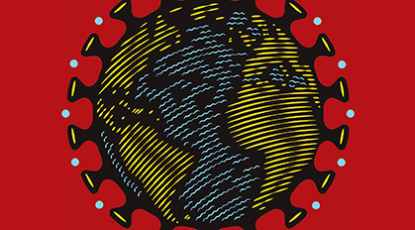Research News
-
Biologist eagerly awaits cicada song
After developing underground for 17 years, the buzzing, bug-eyed horde of cicadas known as Brood X is expected to emerge by the billions in May across southeastern Michigan and other eastern states. Let’s sing!
-
The suicide rate among female nurses is shocking
The 3 million nurses working in the U.S. today comprise the country’s largest health-care workforce — 85 percent of whom are women. They are twice as likely to die by suicide than the general female population, and 70 percent more likely than female physicians.
-
People gave up on flu pandemic measures a century ago – and paid a price
The deadly third wave of the 1918 flu shows what can happen when society prematurely returns to pre-pandemic life, a medical historian cautions.
-
Patient rounds get a technical upgrade
Out of crisis comes opportunity — and with COVID-19 derailing traditional hospital rounds, U-M researchers have found a way to bring caregivers safely to the bedside.
-
Private sector action may be linchpin to conservative support on climate change
Study: Conservatives are more supportive of private-sector action than public-sector action, while liberals are more supportive of government regulations than private-sector action or a carbon tax.
-
How countries on five continents may shape future of health policy via pandemic
Russian author Tolstoy once wrote, “Happy families are all alike; every unhappy family is unhappy in its own way.” That sentiment can be applied to countries’ responses to COVID-19, say U-M researchers.
-
New ways to help older adults self-manage pain
Providing underserved older adults with mobile health tools and the support of community health workers to help navigate local resources could help them better manage their pain, researchers say.
-
The perfect (chatter) storm
Using real case studies to explain behavioral and brain research, psychologist Ethan Kross reveals how that voice in our heads shapes our lives, work, and relationships.
-
How popular is Robin Hood, anyway?
As global income inequality continues to rise, public policy expert Charlotte Cavaillé explores the concept of ‘fairness’ and the politics of income redistribution.










